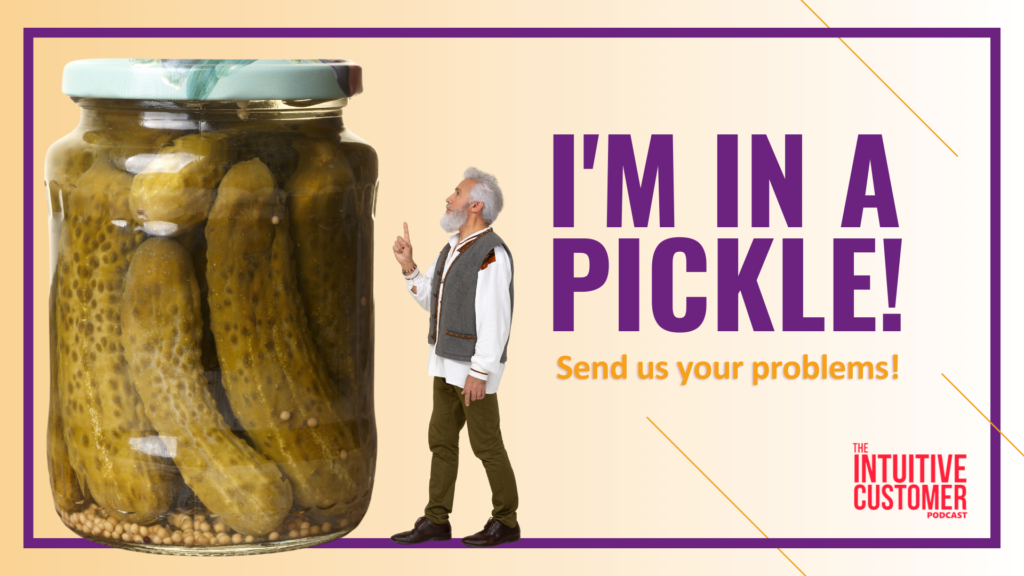Marketers want to target specific customers to get them to buy their product or service. However, different customers want different things delivered in different ways—and for different reasons. So, with all these differences, how do you find the customers that want the same things and target them the same way? The answer is in customer segmentation, and we have five rules to share on how to segment properly.
We discussed the five rules on a recent podcast. It was a subject inspired by some interesting stats I read about in the consumer research team Attest’s 2022 US Consumer Trends report about what different groups of customers want. Consider the following:
- 57% of Americans want brands that make them laugh and entertain them.
- 66% of the older demographic want laughter and entertainment, so even more than the general population
However, in the same report, I read that:
- 47% of Americans want brands that inspire or motivate them.

There is a significant difference in approach and message between a customer wanting to feel entertained and laughing versus feeling inspired and motivated. It isn’t easy for one organization to do that.
Or at least it isn’t easy without using proper segmentation to target your message. So, today we will talk about five rules to ensure that you target the most valuable customers. These rules include:
- Segmentation will shift, and the dynamics will shift.
- Look for multiple inputs to develop your segmentation.
- Define what value means for you.
- It’s about customer behavior, stupid!
- Personas are a great way to communicate who your target customers are.
Let’s take a closer look at each of these, shall we?
Rule #1: Segmentation is dynamic, and it shifts.
We have all experienced drastic change together over the past couple of years. Among the job changes and socializing changes, how we behave as customers changed. In particular, we have new habits now after the pandemic.
It is essential to be current on your customer segments with all this change. Whatever research you had before the pandemic—even if it was from in December 2019 or even February 2020—is outdated. The world has changed since then.
Of course, I can’t tell you how often I hear that an organization last did its customer segmentation research seven years ago. But, frankly, based on the journey we have all been on since then, it might as well be 70 years ago for all the relevance it has now!
It’s not enough to segment once and be done with it. Things continue to change, and we need to keep checking back with our customers.
Rule #2: Look for multiple inputs to develop your segmentation.
It annoys me when I see the customer segmentation, and it uses a single point to differentiate customers. For example, organizations are fond of the big, medium, and small revenue sort or putting customers in groups of those that buy x, y, or z. Neither of these is an effective segmentation. It’s too broad and doesn’t characterize why the customer purchases the way they do.

I’m also annoyed by how often segments are defined in demographic terms. Don’t get me wrong; demographic information is excellent, and it should be one of the multiple inputs. However, if that’s all you’ve got in your segmentation, you are doing it wrong. Demographic information cannot tell you why people buy one brand over another. That part of the equation goes beyond demographics.
Rule #3: Define what value means for you.
Unless you know what you want people to do or what you want to gain, you can’t target. In other words, why are you segmenting? Is it to gain revenue? Increase customer satisfaction? To cross-sell? The point of this rule is to determine what you want to get out of the segmentation. What you are trying to gain will dictate the segments you need to define.
For example, let’s say you are a tech company and want to find a segment of customers who will buy things in the short term. In that case, you might want to identify your early adopters to target. On the other hand, let’s say you want to build brand loyalty and create long-term customers. Naturally, that customer profile is very different than one that wants the latest and the greatest tech toys, although that doesn’t mean there wouldn’t be overlap. After all, you will be (hopefully) drawing from multiple inputs.
Rule #4: It’s the Customer’s Behavior, stupid.
Now that you know what you want from the target, you also need to consider customer behavior. Organizations should segment using behavioral data as one of those multiple inputs. Demographic and geographic information is one of those inputs, but not the only ones. You have to know why people are doing what they do so you can talk to them in a language that is relevant to them.
 Sure, they might be 40-plus, living in a 4-bedroom in New Jersey, but that isn’t why they subscribe to your service. It might be a contributing factor or indicative of specific customers but not the driving force behind their behavior.
Sure, they might be 40-plus, living in a 4-bedroom in New Jersey, but that isn’t why they subscribe to your service. It might be a contributing factor or indicative of specific customers but not the driving force behind their behavior.
If you don’t know what is driving the customer behavior of those different groups, you haven’t done your segmentation appropriately. The goal is not to have groups that demographically look different. The point is to have groups that decide differently and have various sources of what they value or things they want.
You could have a very demographically diverse segment. It could be older adults and young people and rich people and poor people, but they all want the same thing. So then, because you know who they are and what they want, and it’s the same thing, you have meaningful customer segmentation. So then, you can frame your message to those different segments.
Rule #5: Personas are great for communicating who your target customers are
You should have four to eight customer segments upon completion. Then, it’s a good idea to create a persona used internally that represents the segment member’s characteristics. For example, you could have a segment called “Betty.” Betty, the persona, represents your customer segment of homeowners who have been married for more than five years that buy your product or service as a gift and ship it to people out of town. There could also be other behavioral inputs that describe this segment included in the persona, like how Betty prefers text to phone contact and always uses the next-day shipping option. Then, when you are talking with your team, there is a shared vision for what each segment represents.
Personas allow people to get to know your segments and identify those who are a part of it, which is essential. If your customer-facing employees don’t understand who the target customer is and what motivates them, the front line cannot execute your customer strategy. Personas communicate this stuff efficiently and memorably, making it possible for your customer team to achieve your goals for the targeted campaign.
So, there you have it. The five rules for ensuring you target the most valuable customers. When you understand that the segmentations shift, you are ready for change when it happens. Multiple inputs keep you from being too general or vague about the segments. Defining what you are trying to get the target to do will also help you determine how you want to divide up your customers, which should always include common customer behaviors. Then, to make it easy to identify these segments, you create a persona for each of them that keeps the team on message and on target for your customer strategy.
What rules for customer segmentation would you add? We’d love to hear your thoughts in the comments below.
 If you have a business problem that you would like some help with, contact me on LinkedIn or submit your pickle here. We would be glad to hear from you and help you with your challenges.
If you have a business problem that you would like some help with, contact me on LinkedIn or submit your pickle here. We would be glad to hear from you and help you with your challenges.
There you have it. No promotions, no gimmicks, just good information.
Think reading is for chumps? Try my podcast, The Intuitive Customer instead. We explore the many reasons why customers do what they do—and what you should do about it. Subscribe today right here.


